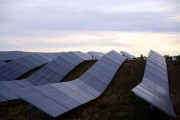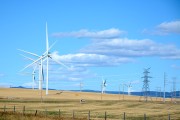Alberta has been a leader in energy production for decades. And, as the world shifts towards prioritizing ESG performance, and companies increasingly look for jurisdictions with renewable energy sources and investment opportunities, Alberta is well-positioned to lead Canada in renewable energy development. In fact, Alberta was home to more than 3/4 of wind and solar development in Canada last year while corporate procurement deals for wind and solar energy have supported nearly $5.5 billion of investment in Alberta since 2019.
Canada, along with the U.S., the U.K. and Germany, have all committed to net-zero grids by 2035, with the U.K. gearing up to be running an emissions-free grid by 2025. The International Energy Agency (IEA)’s 2023 World Energy Outlook notes that a record-breaking 500GW of renewables are set to be added globally in 2023. Canada’s peers, including those committed to the Paris Agreement’s 1.5C goal, are investing in clean energy and making progress to reduce global emissions. And, as the largest emitting province in Canada, Alberta has an important role to play.
Prioritizing the development of emitting sources of energy is out of step with global trends and a risky investment decision in the coming low-carbon economy. Importing emissions intensive energy is less attractive for many countries as it adds unnecessary emissions to a country’s profile. Further, businesses are setting increasingly stringent environmental, social, governance (ESG) goals which is becoming a progressively influential factor when deciding where to invest their capital. For example, Volkswagen Group has committed to “switching to renewable energy sources in all steps of the value chain,” with readily available clean electricity in Ontario contributing to the company’s $7 billion decision to build its first North American-based battery manufacturing plant in St. Thomas, Ontario.
As renewable energy becomes more influential to corporations’ planning and development, it tracks that a clean grid will attract companies looking to future-proof their practices and remain competitive in the low-carbon economy by investing in regions with clean electricity. And this is where Alberta’s abundance of renewable resources is beginning to power the province’s attractiveness for business.
Rising pressure for corporations to address their ESG goals, along with declining costs of renewable energy, has catalyzed a nation-leading boom in wind and solar development. With its unique deregulated electricity market, renewables-hungry organizations can procure low-cost zero emission power through long-term contracts with Alberta’s renewable energy developers. An opportunity some companies are already pursuing. For example, Amazon, with a 100% renewable energy by 2025 goal, signed a deal with Alberta’s largest solar development, Travers Solar project, for 400MW of electricity. Most recently, the renewable energy committed company expanded its portfolio with its first Canadian wind farm, signing a power purchase agreement (PPA) to procure 415 MW from Buffalo Plains, a 485 MW wind farm in Vulcan County.
Amazon is among 26 unique companies, including Budweiser Canada, Microsoft, Shell Energy and TELUS, spanning 10 industries, that have PPAs in Alberta. These PPAs are not only supporting corporations in achieving their ESG and renewable energy goals but are also influencing development of new power capacity in Alberta, with 33% of new power supplied by corporate purchases as of 2022.
Decarbonizing the electricity sector is also the reasonable step for reducing emissions and ensuring a cost-effective and reliable electrical grid, thanks to readily available low- and non-emitting alternatives such as wind, solar and energy storage. Committing to a net-zero grid by 2035 aligns Alberta’s grid with global trends, allowing the province to remain competitive at attracting investment in the low-carbon economy.








